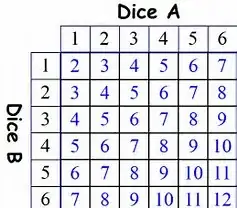I apologize for such a simple question. It has been a while since I took math classes.
When you roll $2$ dice, there are $36$ possibilities. However, there are only $21$ combinations, if order does not matter. Rolling a $(4,2)$ = rolling a $(2,4)$.
Let's say in a game, rolling a $(1,1)$ makes you lose. The odds of rolling this is a $1/36$. But why can't you say the probability is a $1/21$, assuming you roll both dice at the same time? There's only one combination that makes you lose, so why can't you use $21$ as the denominator?
I have tried searching on this topic, but have not found a good answer. (Most likely because my thinking is fallacious.)
